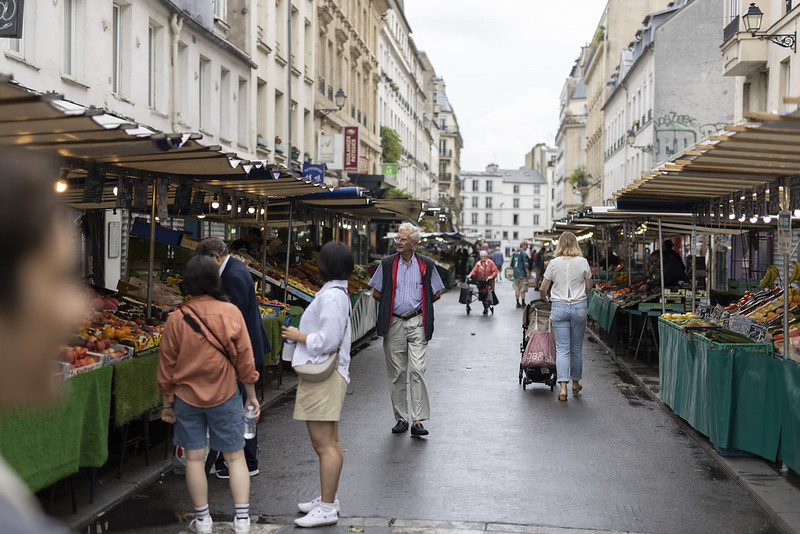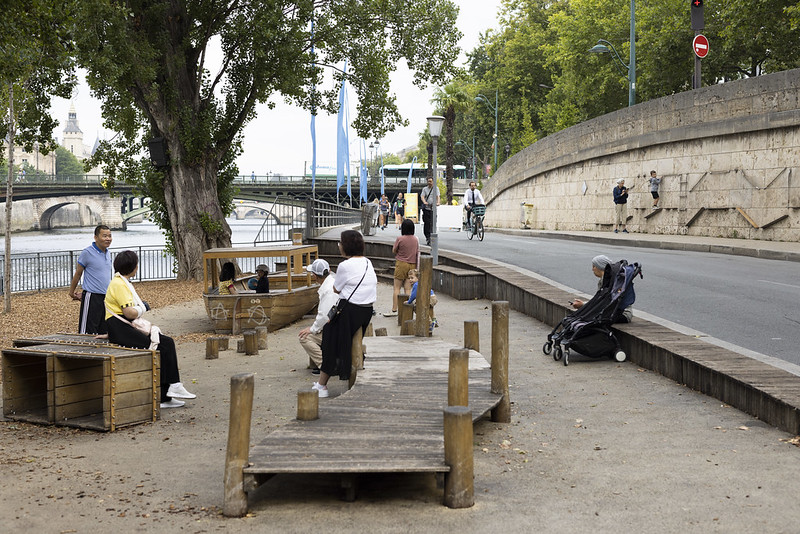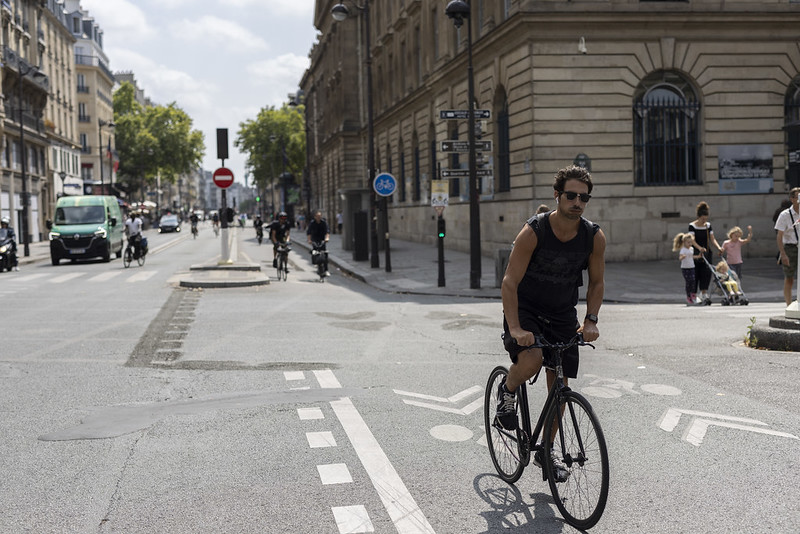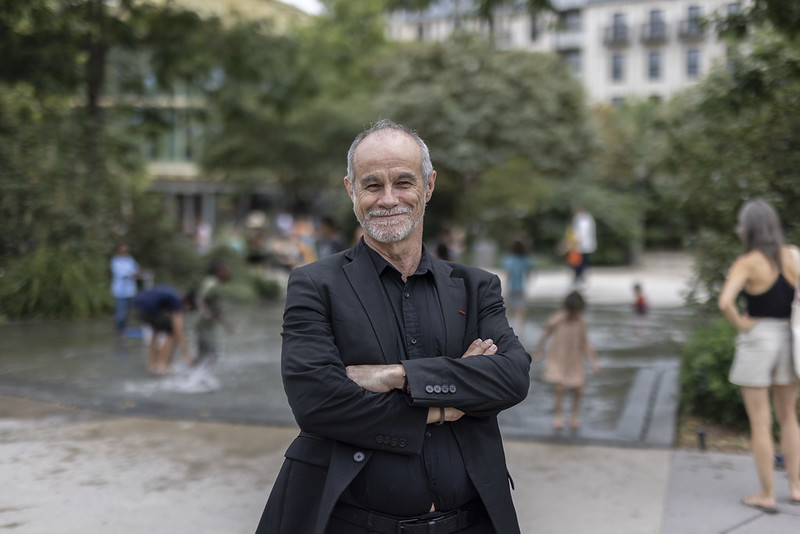
Until just a few years ago, the right riverbank of the Seine in Paris was an urban highway used by over 40,000 vehicles every day. Despite being named a UNESCO World Heritage Site, the road was either heavily gridlocked during rush hour or was a corridor for cars traveling at high speeds. It contributed to the city’s high rates of air pollution, which regularly exceeded EU limits and contributed to thousands of deaths each year in the city.
In 2016, the road was converted into a car-free linear park, used by commuters during the week as well as residents and visitors for leisure activities on the weekends. The move was part of a larger attempt to improve air pollution and livability in the French capital — later referred to as a “15-Minute City” program — which spanned a wide range of public investments across transportation, sustainability and new programs to strengthen neighborhood-level governance.

Besides cleaning the air, residents like Corinne Ansel, a 57-year-old mom of four, saw their quality of life improve in other ways.
“When the bike lanes on the banks of the Seine opened, I started doing all my commuting on foot or by bike, even on days when I telework,” she said. “What a pleasure it is to cycle in the middle of Paris, along the Canal Saint Martin and the Seine, on safe cycle paths.”
Switching to cycling for her commute also cut her travel time in half.
What started as a program to reclaim road space from private vehicles has since grown into citywide agenda for remodeling the city into a place where residents can more easily access local jobs, retail, health and cultural services within a short distance of their homes.
Challenging the Dominance of Private Cars
Despite a reputation for historical charm, Paris experienced a decades-long automotive boom in the 1960s and 1970s that congested and polluted the city. During this period, the previously car-free riverbanks of the Seine were converted into car-dominated avenues and urban highways.
In 2001, Paris Mayor Bertrand Delanoë initiated a string of social and environmental reforms and investments, including the world’s first major bikeshare program and the city’s first climate plan. His deputy mayor, Anne Hidalgo, was subsequently elected mayor in 2014. Following a series of discrete initiatives targeting private and polluting vehicles, increasing social housing and quality of life, Hidalgo articulated her ambitious 2020 reelection policy agenda around making Paris a 15-Minute City.
Drawing on well-known urbanist ideas, the 15-Minute City was coined by Carlos Moreno, a professor from the Paris Sorbonne Business School. It is inspired by the idea of “chrono-urbanism” — thinking about cities in terms of time, proximity and daily and seasonal rhythms. Its key ambition is to “repair” car-centric cities by moving toward a model of mixed-use neighborhoods where residents are within 15 minutes to essential services using non-polluting forms of transportation, such as walking, biking or public transport.
Stronger, More Participatory Neighborhoods
With the first wave of COVID-19 lockdowns in 2020, Mayor Hidalgo’s office seized the moment to take the first step in creating a 15-Minute City and expand an ambitious set of temporary bike lanes and street closures to provide more space for social distancing. Today, the city has over 1,000 kilometers (621 miles) of cycling routes, including separate bike lanes, painted paths and converted bus lanes that are now open to cyclists.

Paris has also focused on transforming educational establishments into local community hubs to build healthier neighborhoods. As a flagship initiative, the city government opened school yards and nurseries after hours and on weekends, to provide residents with recreational public spaces. This has been complimented by a program of pedestrianized “school streets” to encourage safe non-motorized travel to schools.
Matthieu Cornet, a resident of Paris’ diverse 18th district and a father of three, explained that he enjoys key amenities, including shops, green and recreational spaces, a swimming pool and public services, close to his family’s home. “It is through the 15-Minute City project that we appreciate this proximity with services around us. It’s a huge advantage when you live in the city.”
Resident-focused urban development is driving changes in how the city is governed, too. New measures devolve aspects of city policymaking to the city’s boroughs and their mayors. The city has created opportunities in every district for residents to participate in neighborhood-scale planning for greening, beautification, street furniture and micro-mobility improvements. In 2021, it also made available a “participatory budget” of 75 million euros ($82 million) that residents can allocate to crowdsourced projects and vote on.
Sparking a Global Movement
Hidalgo is no stranger to disruption. She steered Paris during the January 2015 Charlie Hebdo shooting, the November 2015 Paris attacks and the 2019 Notre-Dame de Paris fire. Her quest to realize the 15-Minute City in Paris in the wake of a pandemic that traumatized many cities, caught the attention of mayors and urban leaders worldwide as an exemplar for post-pandemic urban recovery. The concept has been adopted in various forms by cities around the world, including Melbourne, Ottawa and Shanghai.
Moreno, the concept’s originator, argued that its resonance derives from creating a simple shared language and compelling vision for city life between residents, citizens, politicians, urban planners, real estate developers, retailers and others.

He reflected that the now-global concept no longer belongs to him or Paris specifically.
“Today we have hundreds and hundreds [of] cities in all continents embracing, at the same time, this idea,” he said. “It has become a shared idea of the common good based on shorter-distanced cities … a trajectory for changing radically our urban lifestyle.”
The 2021-2022 WRI Ross Center Prize for Cities celebrates projects and initiatives showing how to live and thrive in turbulent times. From five finalists, one grand prize winner will be announced February 1, 2023.
This article originally appeared on WRI’s Insights.
Salome Gongadze is the Evaluation, Learning, and Engagement Specialist for WRI Ross Center Prize for Cities.
Anne Maassen is the Global Lead for WRI Ross Center Prize for Cities.






